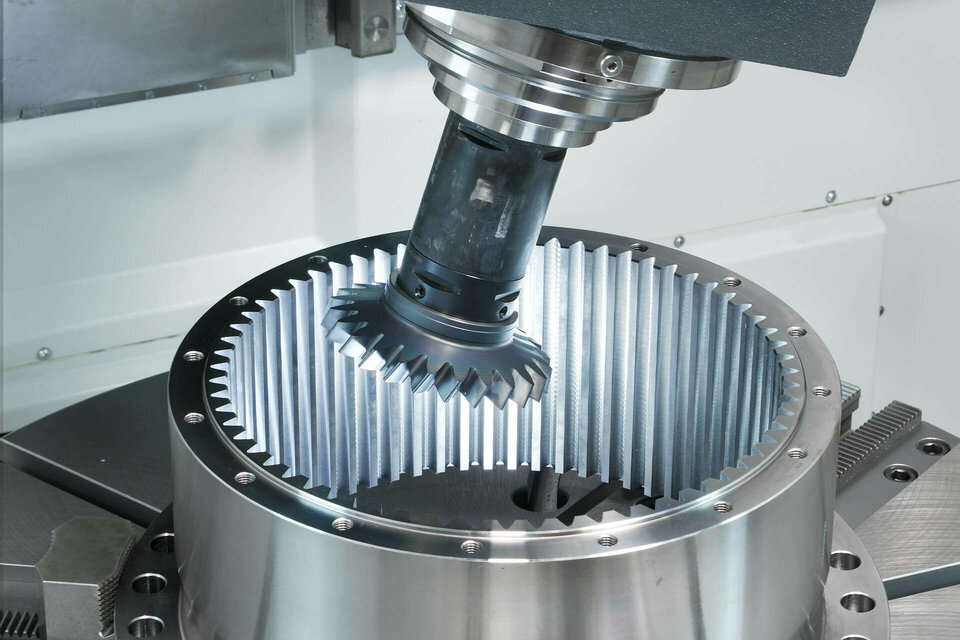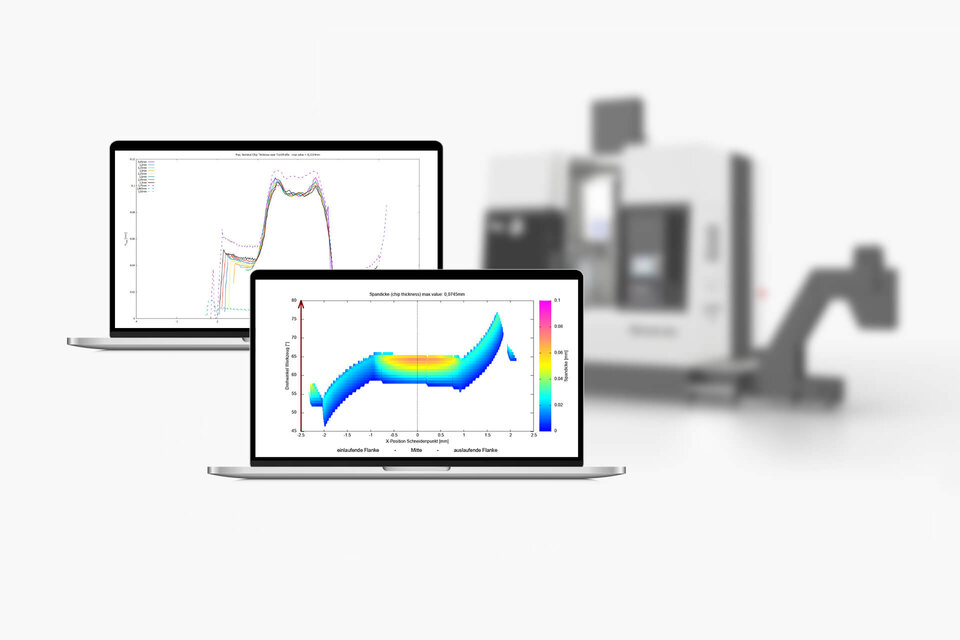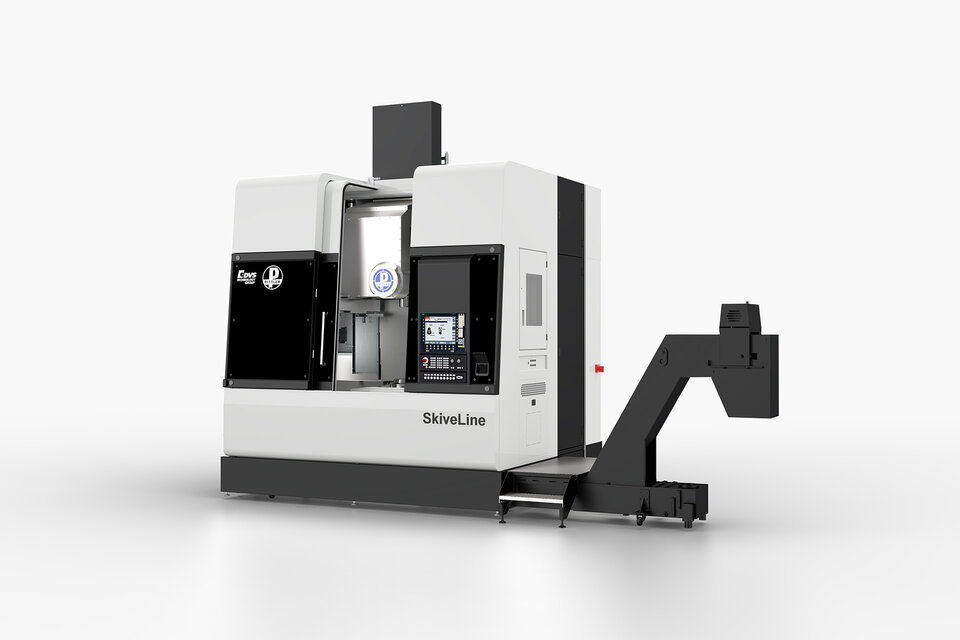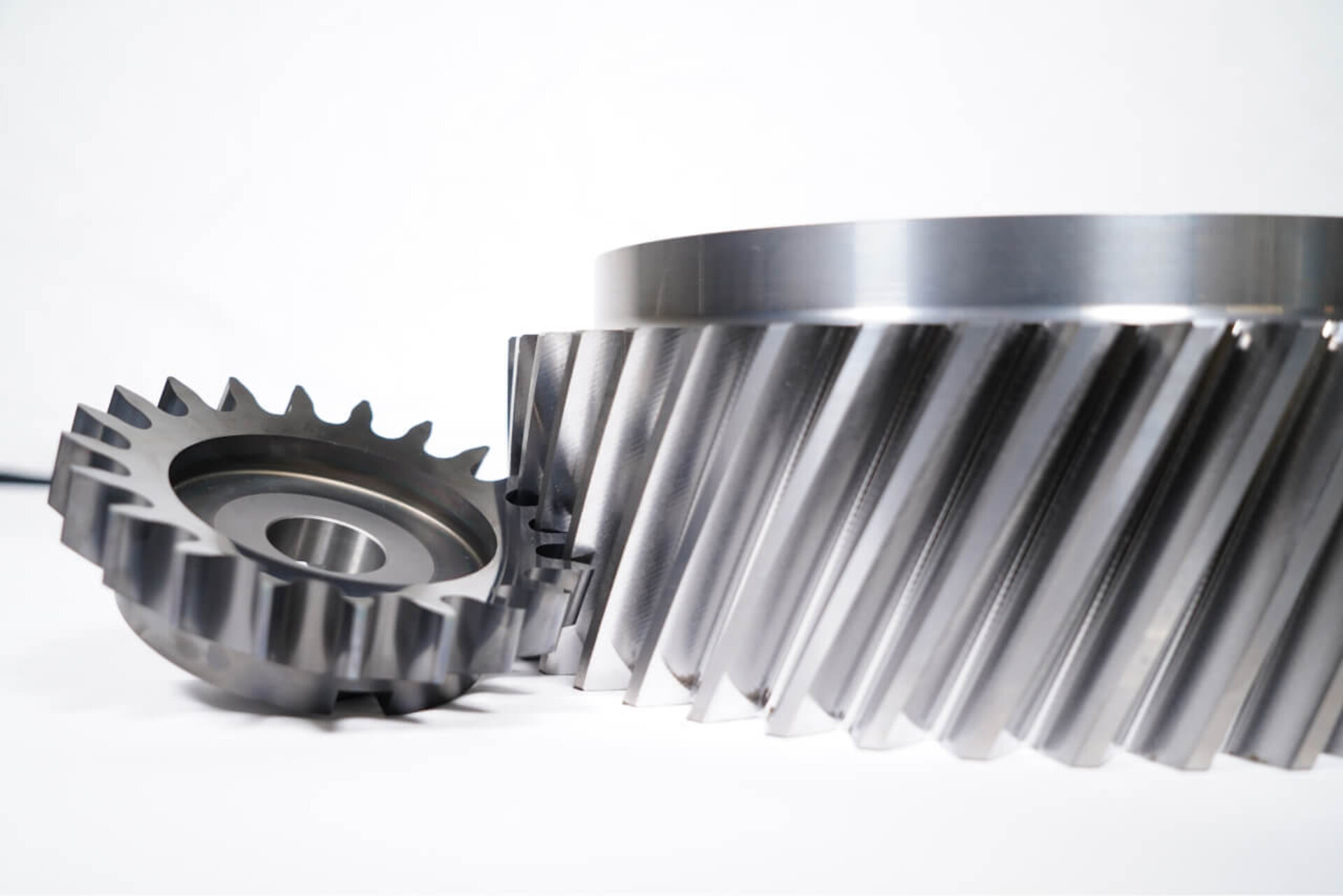
Skiving Tools
What is it?
Today, there are different tool types available for skiving. These differ not only in terms of material, but also design. Each variant has its own advantages and disadvantages.
Regrindable tools
The skiving process usually employs cylindrical or conical bell-type peeling wheels. These types of wheels can generally be reground, which means they can be used over and over.
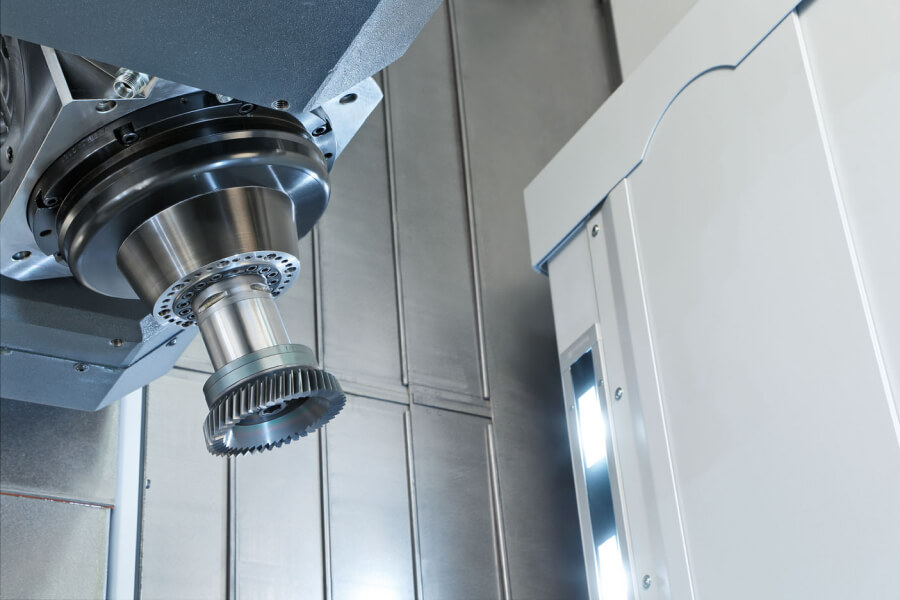 Example of a regrindable skiving tool: A skiving head from PITTLER T&S
Example of a regrindable skiving tool: A skiving head from PITTLER T&S
Compared with conical tools, cylindrical tools are better for repeated regrinding, because the profile change of the cutting edge due to regrinding must be taken into account with conical tools. But conical tools offer more flexibility with regard to design and position parameters as well as the workpiece contour.
Single-use tools
Single-use tools are employed for small components, low quantities, or special applications. They usually have a relatively small diameter, a low width, and can be used in a variety of ways. But, as the name suggests, they cannot be reground.
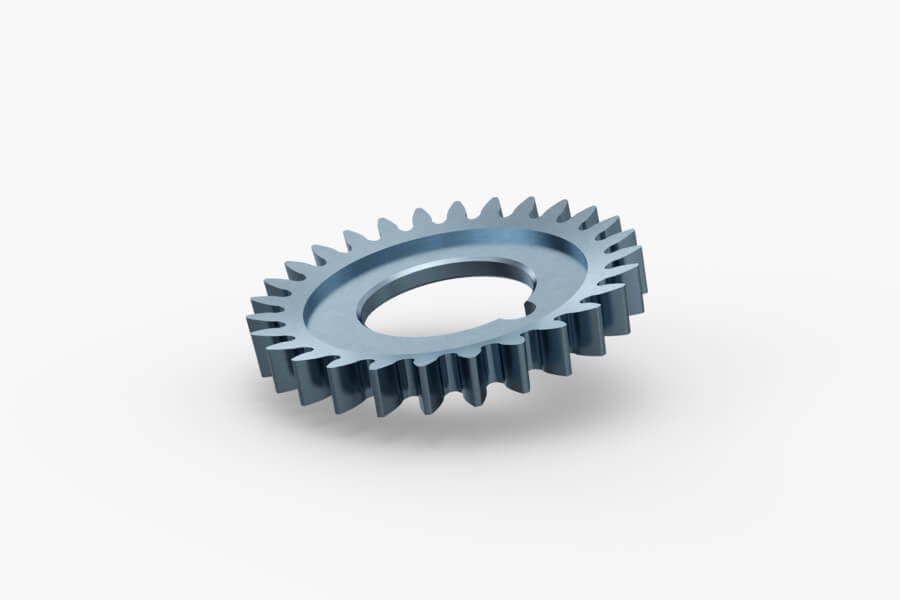 Example of a single-use tool for skiving
Example of a single-use tool for skiving
Materials
Traditionally, carbide or powder metallurgical high-speed steel (PM-HSS) is used for regrindable and single-use tools.
Carbide generally offers higher cutting speeds and longer lifetimes, but it is more complex when it comes to resharpening, while PM-HSS is more elastic and more forgiving in terms of dynamic loads. PM-HSS is also preferable in terms of price. In the end, the component to be geared and its material also play a decisive role when selecting the substrate.
Indexable insert tools
In addition to single-piece tools there are also variants with indexable inserts, similar to milling tools. A cutting insert holder is designed to match the workpiece and is then fitted with ground or pressed form inserts or standard indexable inserts.
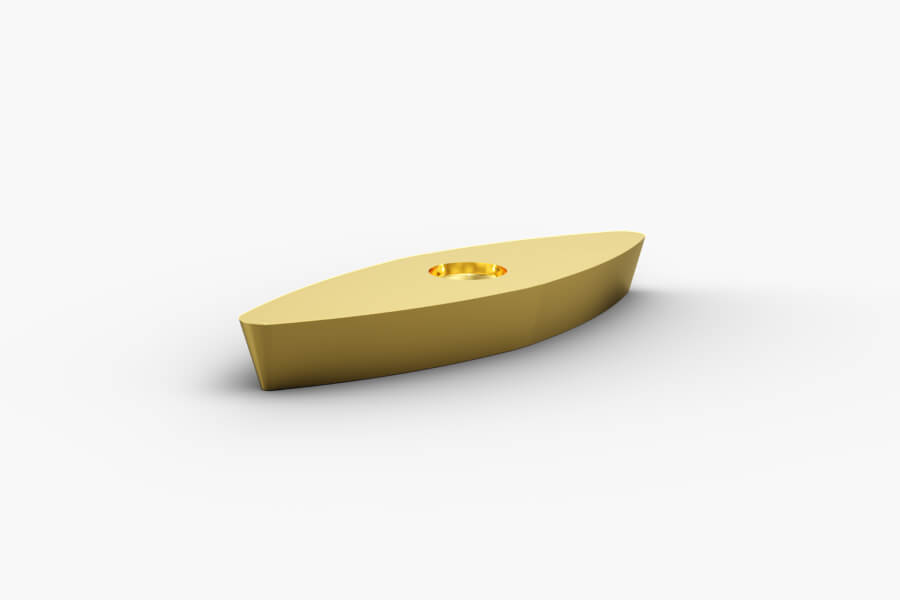 Example of an insert mold: A mold insert from Pittler T&S
Example of an insert mold: A mold insert from Pittler T&S
These tools are usually used for roughing the tooth gap, especially with large modules. It is also possible to produce shaped plates for finishing the final contour. But economically, these only make sense in large quantities.
Standard indexable inserts – mostly V-inserts – usually do not have a long lifetime due to the small head radius and the complex infeed strategy, since the cutting edge contour is far from a peeling wheel contour. This is why Pittler has developed its own standard form plate, especially for roughing from module 4 and up. We are happy to offer you these including designing and mounting. Please contact us if you are interested.


